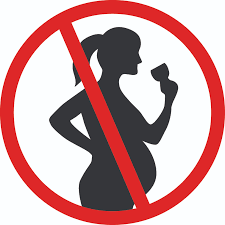The importance of adhering to alcohol labelling mandatories
In the alcoholic beverage industry, there are a number of alcohol label mandatories that are required to be on each individual unit and outer packaging of products. In Australia, the regulatory body that determines these mandatories and standards is FSANZ (Food Standards Australia New Zealand). Compliance laws are updated often and manufacturers need to stay on top of current requirements. Below we discuss the current requirements for alcoholic beverages.
Pregnancy logo
The latest change to alcohol labelling was the update of the pregnancy warning. From July 31st 2023, all products that are produced must contain the updated logo in the correct size format. Depending on the alcoholic beverage content, pack size and package type, there are different logos and different sizes that are required. There is a pregnancy warning pictogram and a pregnancy warning mark that are mandated. The text no the pregnancy logo must be black with the strike through on the individual must be red. There is no set PMS colour for this – but it must be some variant of the colour red.
Allergens
All allergens must be declared on the product and any outer packaging. New standards were announced that required allergens to now be written in bold, separate from the ingredients list.
Responsible drinking
To encourage responsible drinking, all units and outer packaging should contain the drinkwise logo and the tag line ‘enjoy responsibly’.
Nutritional information
Unlike food, in Australia only alcoholic beverages which include a nutritional claim are required to have a nutritional information panel (NIP) included on the individual unit. These could include claims such as ‘lower sugar’, ‘lower carb’, ‘sodium reduced’ etc. There are currently no standards specifying that the NIP needs to be included on outer cartons (ie: 24 pack can cartons or 4 pack can wraps), but it does need to be present on the individual unit (the individual bottle or can).
Best before dates
Individual units should contain a best before date on the product. This could be on the base of the can, on the side of the a bottle or on the base of a bottle. The label and any outer packaging should specify where this best before date can be found. ie: For best before see base of can – this could be printed on the side of the can as well as an outer packaging such as a 10 pack wrap or 24 pack slab carton.
Other mandatories
The standard drinks per individual unit, alcohol percentage, carton weight, recycling for 10c refund information, manufacturer address, barcodes and pack size are also required on each article of outer packaging. For pack size, this includes saying 375ml on each can, 4 x 375ml can on the 4pk wraps and 24 x 375ml cans on the outer slab carton.
Finalising artwork that satisfies all legal requirements is more complex than you might think. Companies should implemented a clear, consistent artwork approval process to ensure every product and all its packaging always contain the correct alcohol labelling mandatories.
Extensive labelling requirements are just one reason when beverage brands sometime opt to work with a contract bottling organisation like Idyll, who make it a priority to keep abreast of changes and requirements in the beverage industry.
